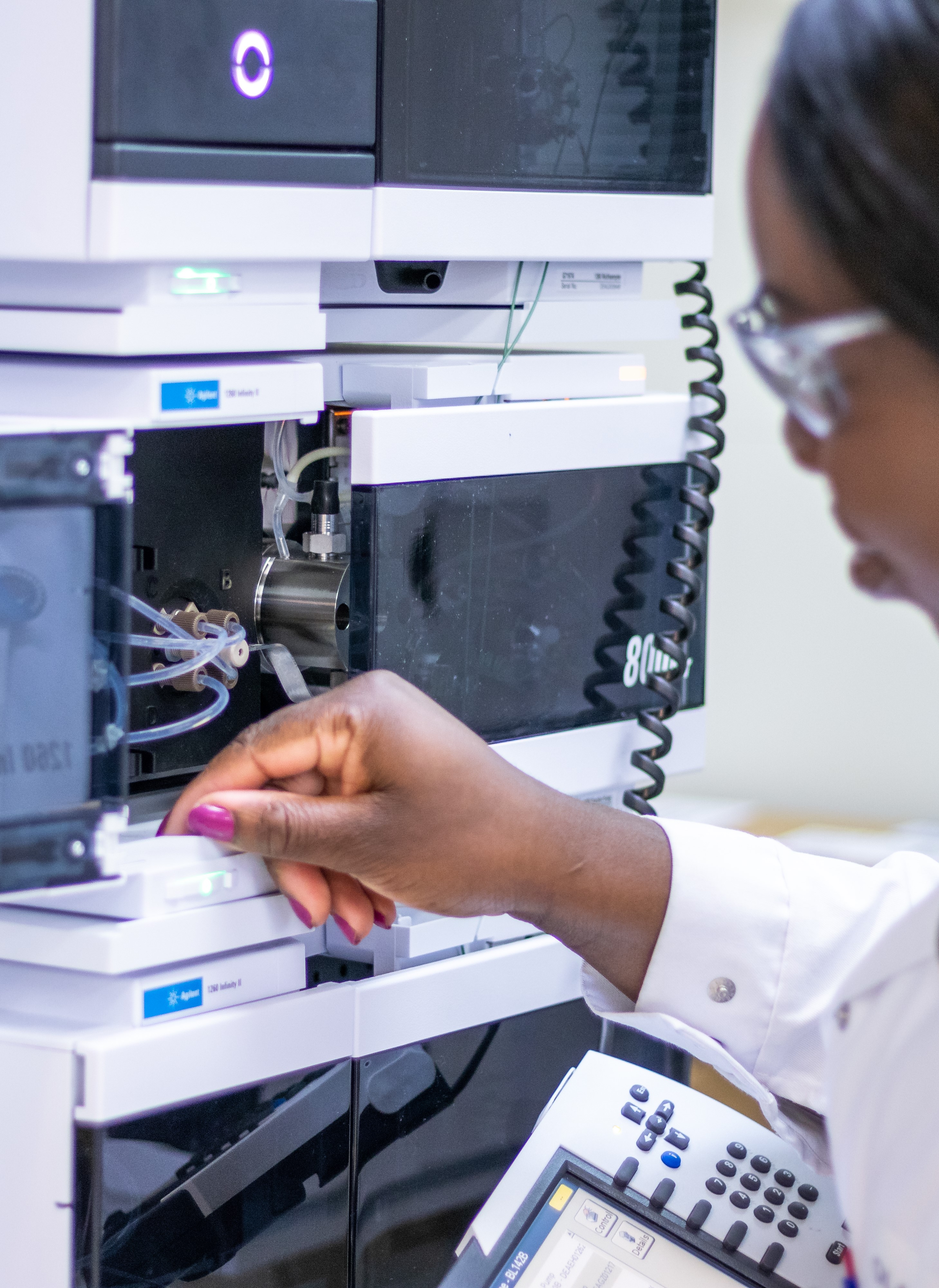High-performance liquid chromatography (HPLC) testing has been widely used for many years and is commonly referenced in pharmacopoeial monographs. The primary distinction between HPLC and ultra-performance liquid chromatography (UPLC) lies in the operating pressure of the systems.
HPLC vs UPLC: Key Differences
UPLC was developed alongside the introduction of sub-2-micron particle columns to enhance the efficiency of liquid chromatography separations. Increasing the surface area of the column allows for shorter columns to be used, which reduces the separation time and run times without sacrificing critical system suitability, such as resolution. UPLC is the future of liquid chromatography (LC) because it uses less reagents and solvents overall, thus saving time, money and the environment.
How Liquid Chromatography Works
Both techniques are widely used for organic and inorganic materials, as well as semi-volatile and non-volatile compounds in liquid samples. LC uses a liquid mobile phase which is consistently pumped at a set flow rate and moves through the system, transporting the sample, which is injected by the autosampler, into the column, which is the heart of LC. This is where separation occurs and the separated components are then transported to the detector, where each analyte is detected as it hits the detector.
Where HPLC uses 3-10-micron particle-sized columns, UPLC uses sub-2-micron particle-sized columns. This wide range of columns allows LC to be the go-to technique to separate, identify and quantify a wide range of samples. There are minimal limitations to the samples that can be analysed by LC. Simply put, if it can be dissolved, it can be analysed by liquid chromatography.

Common Applications of LC Testing
They are especially useful for determining content (assays) and purity, monitoring levels of degradation products or by-products in manufacturing processes (related substances, limit tests), and characterising complex materials (identification).
Available Detectors
We have a wide range of detectors for our liquid chromatography, which are all UPLC capable, and we are available to accommodate the needs of our clients, including:
- UV (Single wavelength): This detector measures absorbance at a single ultraviolet wavelength, making it ideal for compounds with strong UV-absorbing groups. It’s simple, sensitive, and widely used for routine analysis.
- Photo Diode Array (PDA): PDAS, also known as Diode-Array Detectors (DAD), capture absorbance across a range of UV-Vis wavelengths simultaneously, allowing for peak identification, purity assessment, and spectral comparison during a run.
- Fluorescence (FL): FL detectors measure emitted light from analytes excited by a specific wavelength. They offer high sensitivity and selectivity, but are limited to naturally fluorescent compounds or those derivatised to fluoresce.
- Refractive Index (RI): RI detectors measure changes in the refractive index of the mobile phase caused by analytes. They are universal but less sensitive and incompatible with gradient elution.
- Evaporative Light Scattering Detector (ELSD): ELSD nebulises the column eluent, evaporates the solvent, and detects scattered light from remaining analyte particles. It is suitable for non-volatile, non-chromophore compounds.
- Mass Spectrometry (MS): MS detects analytes based on their mass-to-charge ratio after ionisation, providing highly sensitive and specific identification and quantification, often with structural information.
We also have a Hitachi LA8080 High-Speed Amino Acid Analyser, which is dedicated to Ninhydrin-Positive Substances (NPS) testing. It complies with Ph. Eur 2.2.56 as designated in several amino acid monographs. According to the JP monograph, this instrument is also suitable for testing related substances in amino acids. For more details, see our Ninhydrin-Positive Substances whitepaper.
Frequently Asked Questions
HPLC stands for High-Performance Liquid Chromatography (also called High-Pressure Liquid Chromatography). It is an analytical chemistry technique that separates, identifies, and quantifies components in a mixture.
HPLC (High-Performance Liquid Chromatography) tests for and analyses various substances in many fields. What it tests for depends on the application, but in pharmaceuticals:
Purity of drugs
Detects and quantifies impurities and degradation products.
Active pharmaceutical ingredient (API) content: A measure of how much of the actual drug is present in a formulation.
Stability testing
Monitors chemical changes in a drug over time.
Related substances
Identifies structurally similar compounds (often impurities).
Identification of compounds
Each compound in your mixture appears as a separate peak on the chromatogram. The retention time (how long it takes for the peak to occur) helps identify the compound by comparing it to known standards.
Quantification (Amount of each compound)
The area or height of each peak is proportional to the amount (concentration) of that compound in your sample. You can measure how much of each compound is present by comparing peak areas to calibration curves made from certified standards of known concentrations.
Purity and impurities
The presence of extra peaks besides the main one can indicate impurities or degradation products.
The size of impurity peaks relative to the main peak shows their concentration.
Sample composition
You can determine the exact makeup of complex mixtures (e.g., how much sugar types in juice, or how many drugs are in a formulation).
Stability
By running samples over time, you can detect if compounds degrade or change, which is important in drug stability studies.
The primary separation is done in the LC column. Components are separated based on the type of chemical interaction between the analyte and the packing of the stationary phase (size exclusion, ion exchange, affinity for the mobile phase or affinity for the stationary phase).
Mobile phase compartment or tray—This is where bottles containing mobile phase, autosampler needle wash, etc., are kept.
Pump
this delivers the liquid mobile phase accurately, at a set flow rate
Autosampler – This unit contains the autosampler syringe, which injects the liquid sample, usually from a vial.
Column
A long stainless steel column that contains finely packed materials to a specified size. This is sometimes referred to as the stationary phase. This is where the separation of components occurs.
Detector
This is where the separate components are individually detected. The concentration of each component is usually measured in peak area or peak height.
Computer/PC—Used to measure peak responses and analyse the data. Software helps identify and quantify the peaks to produce results.
